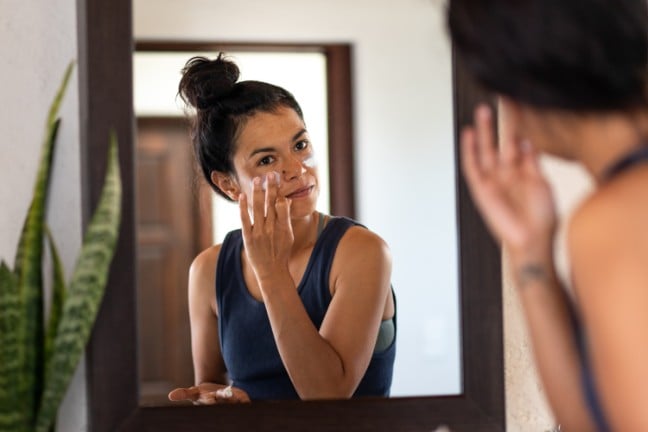You’ve got the tickets booked, the car packed and the itinerary ready to go. In addition to scouting restaurants and hotels, have you thought about your family’s sun safety plan on vacation? Not only can a sunburn ruin your fun, but too much sun exposure can also lead to premature aging and even skin cancer. Protect your skin all summer long with these tips from St. Luke’s Health.
1. Stock Up on the SPF
Sunscreen with a minimum rating of sun protection factor 15 (preferably SPF 30 or higher) should be at the top of your shopping list. Buy only broad-spectrum sunscreen that protects against both ultraviolet A and ultraviolet B rays. If fun in the ocean or lake is part of your plans, look for a water-resistant formula (the only term formally defined by the FDA). There is no such thing as “waterproof” or “sweat-proof” sunscreen.
2. Remember Sun Safety Starts at Home
If you have a long drive ahead of you, apply sunscreen before you go. Unless you have UV-blocking tinted windows, car glass does not block UVA rays. This means that you or your child could end up with a sunburn just from your road trip. The same goes if you have a window seat on a daytime flight.
3. Dress for the Sun
Hats with wide brims, sunglasses, long-sleeved shirts and pants can all help limit sun exposure. Tightly woven fabric will offer more sun protection. You can also buy clothing with UV protection built into the fabric.
4. Look at the Clock (and Your Weather App)
The strength of the sun’s rays—and your likelihood of getting a sunburn—vary depending on the time of day. If possible, stay indoors or in the shade between 10 a.m. and 4 p.m., when the sun is at maximum strength. Also check the daily UV index (available on most weather apps); higher numbers mean greater risk of sun damage.
5. There’s No Such Thing as Too Much Sunscreen
If you will be outside most of the day, you need to reapply your sunscreen frequently. Reapply at least every two hours and immediately after swimming or heavy sweating. Apply insect repellent after sunscreen for best protection.
6. Be Prepared for Where You’re Going
If your vacation involves mountains or tropical islands near the equator, you will face increased sun exposure. Even if you’re planning to travel to the Southern Hemisphere, where it’s winter during U.S. summer months, you still need sun protection.
7. Check Your Medications
Certain medications and over-the-counter treatments can increase your sensitivity to sun or heat, including:
Antibiotics
Cancer treatments such as chemotherapy and radiation, even after they have ended
Nonsteroidal anti-inflammatory drugs (NSAIDs), such as ibuprofen
Retinoids and other topicals to treat acne or aging skin
If you aren’t sure if your medications increase sun sensitivity, ask your doctor or pharmacist.
8. Know When to Go See a Doctor
If you or your child has a sunburn that blisters, call a doctor or visit urgent care. You can also use your daily sunscreen application to look for moles that could be worrisome. Remember the ABCDEs of melanoma:
Asymmetry: Does the mole have one half that is shaped differently?
Border: Does the mole have an irregular border instead of a smooth one?
Color: Does the spot have more than one color?
Diameter: Is the spot bigger than a pencil eraser?
Evolving: Has the spot changed size, shape or color?
If you notice a mole or spot on your skin that has any of these signs, make an appointment with your St. Luke’s Health provider today.




